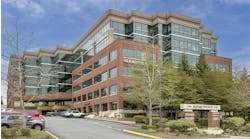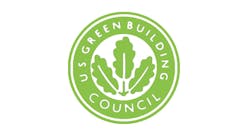CHICAGO — Building green, energy efficiency, water conservation and building a smart-grid were just some of the sustainable topics discussed at GreenTown Chicago 2009, a one-day conference about energy-efficient practices and technologies, green design and building techniques, and sustainable policies, at Columbia College here, Oct. 15, 2009.
Richard M. Daley, mayor of Chicago, and Suzanne Malec-McKenna, commissioner of the department of environment, Chicago, spoke at the event. Daley talked to attendees about the importance of such a conference and why it makes sense for Chicago and other cities to embrace sustainability, and Malec-McKenna reviewed the Chicago Climate Action Plan; past, present and future green projects; and the city's water and energy accomplishments.
“We realize we need to lead by example,” said Daley. “In Chicago, it's economic sense for the city, employees and citizens.”
Daley added that it is necessary to educate contractors, architects, engineers and developers about building sustainable and the environment.
The keynote address was presented by Robert F. Kennedy Jr., vice chair and chief prosecuting attorney for Riverkeeper, an independent environmental organization, and chairman of Waterkeeper Alliance, a water advocacy organization. He is also a clinical professor and supervising attorney at Pace University's School of Law's Environmental Litigation Clinic, and senior attorney for the National Resources Defense Council. Kennedy's address focused on renewable energy, the power-grid and the obstacles the Obama Administration faces.
According to Kennedy, the U.S. is the second best place for geothermal in the world and the third best place in the world for solar, and there is also enough wind in the Midwest to harness enough energy for the country.
He also explained that one of the obstacles the current administration faces is the lack of a national grid that can transfer energy currents from renewables — the current grid system can't transfer energy from wind and solar far distances. He added that regulation is an obstacle too — current rules often restrict access to the grid.
“The country needs to build a national smart-grid,” said Kennedy. “The technology is out there — the software and the hardware.”
Building green
After the keynote address, participants attended one of five different tracks. Each track included three different one-hour breakout sessions. Presenters at these sessions included Bob Dixson, the mayor of Greensburg, Kan., and Jeanne Gang, principal architect at Studio Gang Architects, Chicago.
During the Rebuilding Greensburg, Kan., session, Dixson updated attendees on the city's rebuilding efforts.
According to Dixson, the 5.4.7. Arts Center is the first U.S. Green Building Council LEED Platinum building in Kansas. The building utilizes windmills, solar photovoltaic panels and a geothermal system. Greensburg also has the first LEED Platinum residential facility and the first LEED Platinum municipal building in the state.
The City Hall, completed this fall, will most likely receive LEED Platinum certification. The building uses solar, geothermal and recycled bricks on the outside. The high school is also LEED Platinum, and there are plans to implement classes about sustainability in the curriculum.
“We have the opportunity to be the first pioneers of the 21st Century,” said Dixson at the end of his presentation about the city's sustainability efforts. “Greensburg is a living laboratory.”
At the Great Design, Green Design breakout session, Gang discussed how imperative it is to implement green technologies during the initial phases of the design and building process. She reviewed the sustainable design and systems installed in the Ford Calumet Environmental Center, Calumet, Ill.; Columbia College's Media Production Center, a facility housing a film studio, animation studios and classrooms; and Aqua, a hotel and residential high-rise with retail and commercial spaces, located in Chicago. Gang explained how the sustainable design and systems equate to energy and water conservation. USGBC LEED certification is pending on all three buildings.
“It's not just architecture and design, but also an integration of systems,” said Gang. “Everyone needs to work together from the beginning.”
Water conservation
Water conservation was also a key topic during the afternoon sessions. George Heartwell, the mayor of Grand Rapids, Mich., spoke about the city's water conservation efforts. This summer, the City of Grand Rapids was selected by the Great Lakes St. Lawrence Cities Initiative (GLSLCI) to be recognized for significant water conservation progress. As a member of the GLSLCI, the city has committed to reducing water use within city limits. The water conservation goal for participating cities is a 15% reduction in total water usage below year 2000 water consumption levels by 2015. Grand Rapids has nearly met this goal for the past three years.
According to Heartwell, the lowest-hanging fruit that has the greatest impact when conserving water is to reduce the water loss in the system.
“All systems in older cities like Chicago and Grand Rapids are aging infrastructure, and it leaks, so if they [leaks] are stopped, there can be a huge impact,” said Heartwell. “We were losing 20% of our water. We reduced it from a 20% loss to an 11.5% loss; the goal is 8%, which we want to achieve.”
Heartwell spoke about efforts across many city departments to reduce water use in their facilities, including reuse of treated wastewater at the city's wastewater treatment plant for irrigation and the cooling of operating equipment. In all city buildings automatic, low-flow toilets and automatic sink valves have been installed.
Other speakers at GreenTown Chicago included John DeWald, developer of Serosun Farms, a sustainability community in Kane County, Ill.; David Ullrich, executive director of the Great Lakes and St. Lawrence Cities Initiative; Leigh McMillen, senior project manager, Leopardo Construction; and other industry professionals and government officials involved in green practices and policy creation.




